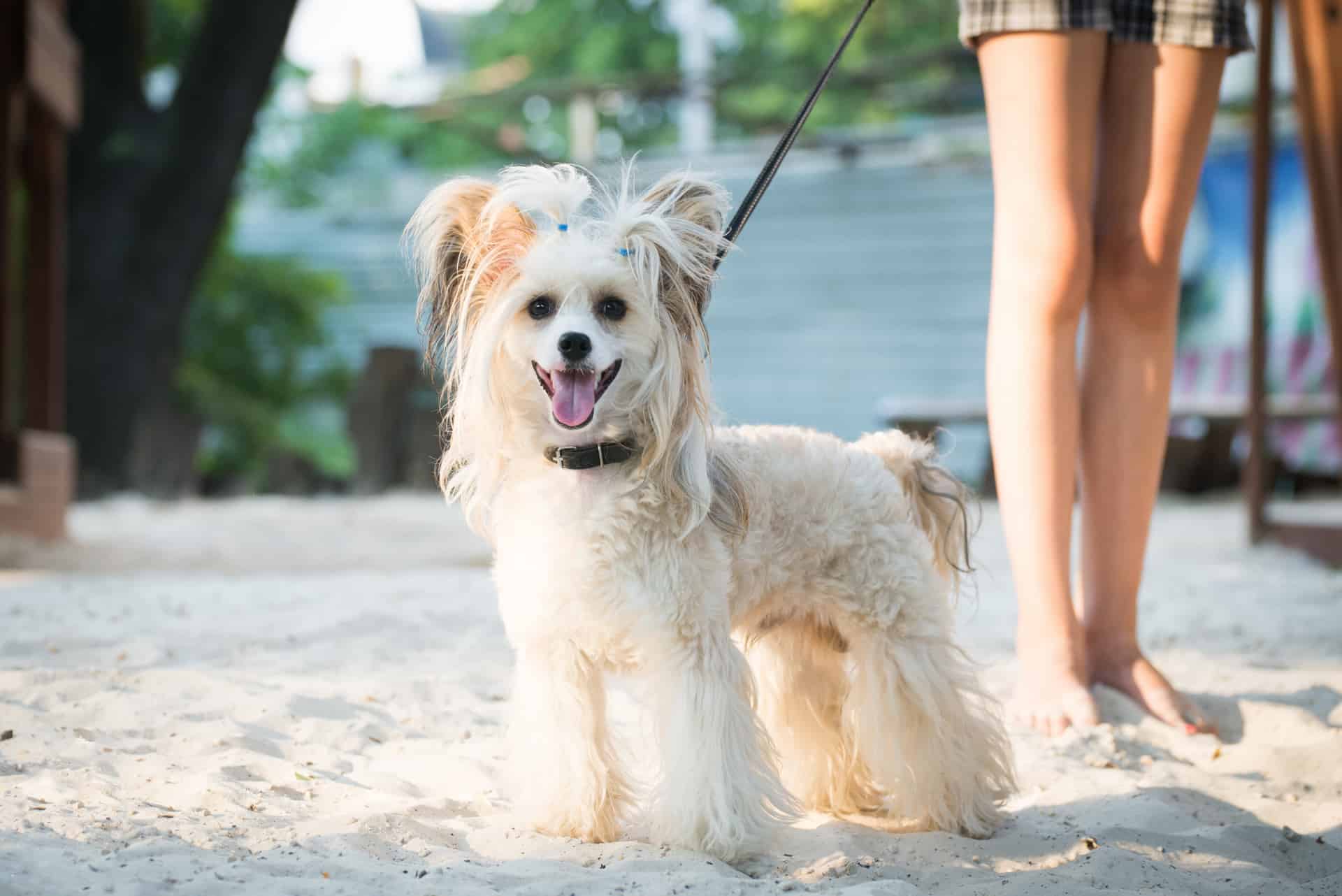Protecting Your Dog’s Paws on Hot Sand
Protecting your pup’s paws on hot sand is essential. Here are some things you can do!
- Get booties for your pup to wear on hot sand or pavement. Make sure they fit well before going out.
- Plan beach trips for cooler times of the day, like morning or late afternoon.
- Look for signs of discomfort in your pup, like limping or lifting paws too much.
- Carry a jug of water to wash and cool your pup’s paws. Apply paw balm or pet-friendly lotion after exposure to heat.
Your pup’s paws are sensitive – it’s up to you to keep them safe!
The Outline Should Look Like This-
Protect your pup’s paws from the heat of beach sand! Here’s how:
- Check the sand temp with your hand. If it’s too hot for you, it’s too hot for your pet.
- Plan beach trips during cooler times of day.
- Get booties or paw wax to shield your dog.
- If your pup shows signs of burns, seek vet care ASAP.
- Keep pup hydrated and in the shade.
- Secure their safety and comfort for the best beach fun.
1. Understand the dangers of hot sand for dogs’ paws
It’s essential to be aware of the threat hot sand can pose to your dog’s paws. Burns, blisters, and long-term damage are all risks. Be a responsible pet owner and take preventative steps. Here are some tips:
- Before letting your pup on the sand, feel it with your hand.
- Avoid the beach at peak sun hours (10am-4pm). Go for an early morning or evening walk instead.
- Keep your dog on a leash. That’ll stop them from running on hot sand and pavement.
- Invest in booties or paw wax to protect their paws.
By taking these precautions, you can help keep your pup safe and healthy at the beach.
1.1 What temperature can cause burns
Hot sand can burn a dog’s paws. It depends on: exposure time, breed, and sand texture. Temperatures over 125°F can cause burns in just 60 seconds. Thin-pawed, puppy and senior dogs are more at risk.
Here are tips to protect them:
- Test the sand with hand or thermometer.
- Walk during cooler times or use protective boots.
- Apply petroleum jelly or paw wax before walks.
- Shield their feet from hot surfaces.
1.2 Signs of paw pad burns
Be aware of the signs of paw pad burns if your pup has been exposed to hot sand. This can be painful and lead to infection if not treated.
Look out for:
- Limping or avoiding putting weight on the paw
- Redness or swelling
- Blisters or sores
- Wet or discolored paw pads
- Licking or biting at affected paw
If you notice any of these, take your pup to the vet right away. Keep them off hot sand and provide a cool and soothing surface. Use protective wax or booties to prevent future burns.
Pro tip: Test sand with your hand before walking your pup. If it’s too hot for you, it’s too hot for your pup!
1.3 Risks of infections
Hot sand can damage your pup’s paws. This may cause infections. If your dog has cuts or wounds, then hot sand can worsen the condition and lead to an infection.
Also, walking on hot sand can dry out paw pads, creating cracks and openings that invite infection. Bacteria and other microorganisms love hot, humid environments like the beach. So, your pup’s paws can be exposed.
Protect your pup’s paws from infections. After a visit to the beach, rinse them off with clean water. Apply a paw balm to keep the pads hydrated. Watch for any redness, swelling, or discharge. If you see these, contact the vet immediately.
2. Precautions to take
When it comes to hitting the beach with your furry friend during summer, it’s important to protect their paws from the hot sand. Here are some tips:
- Limit exposure.
- Walk during cooler hours.
- Invest in booties.
- Check the sand temp with your hand.
- After a day at the beach, rinse their paws with cool water and check for any signs of injury or burns.
Taking these precautions lets you and your pup safely and healthily enjoy the summer sun and sand!
2.1 Time of day to walk
Walk your dog in the mornings or evenings for best results. The sand’s too hot in the day. Test it first with your hand. Get booties to protect paws. Bring water, too–dehydration can happen fast!
2.2 Wax-based balms and creams to protect paws
Wax-based balms and creams are an excellent way to shield your pup’s paws from the hot sand at the beach. These balms form a protective layer on your pooch’s paws to stop burns and blisters from the hot sand. Plus, they contain moisturizing ingredients to keep paws soft and hydrated.
Here’s how to use them:
- Clean the paws with a damp cloth to take away any debris or sand.
- Scoop a small amount of balm or cream and massage it into paw pads and between toes.
- Wait for the balm or cream to dry before letting your dog walk on the hot sand.
- Re-apply every few hours for maximum protection.
Pro tip: Avoid the beach during peak sun hours and give your pup a shady spot to rest between walks.
2.3 Dog booties and socks for protection
Dog booties and socks are great for protecting your pup’s paws from hot sand and other hazardous surfaces. They are made with tough, breathable materials to keep paws safe and comfy. For extra protection, get booties and socks with rubber soles.
Check the fit too – they need to be snug but not too tight. Acclimate your dog to wearing them by having them wear them for a few minutes each day, gradually increasing the time.
Pro-tip: Trim your dog’s nails regularly to stop snagging and make sure the socks/booties stay in place!
3. Proper care after a beach outing
Protecting your pup’s paws is essential after a beach adventure! Here are some super easy ways to do it:
- Put booties or paw wax on your dog before the beach.
- Stay away from hot sand during peak hours (typically midday). Stick to wet and cooler sand.
- Give them plenty of water, but no food before or after walking on the sand.
- Use cool water to rinse off their paws – get rid of sand, salt and other debris.
- Dry off their paws with a towel or cloth to prevent bacteria and moisture.
By doing these steps, you can keep your pup’s paws healthy and happy after a beach day!
3.1 Washing and drying your dog’s paws
During summer, washing and drying your pup’s paws is a must. Do this:
- Get lukewarm water and put pet-safe soap or shampoo in it.
- Dip their paws in the basin and rub gently with a washcloth.
- Rinse the paws with lukewarm water.
- Dry the paws with a clean towel and make sure to get rid of any extra moisture between the toes.
- Put a paw protector like wax or balm on their paws to protect them from hot sand and other outdoor risks.
Pro tip: If your pooch is prone to paw irritation in hot weather, consider buying breathable booties to keep their paws safe from hot surfaces.
3.2 Checking and treating any signs of paw pad burns or injuries
Paw pad burns are an issue for dog owners who take their pup to the beach in summer. Check your pup’s paws regularly for any signs of injury and address them asap.
To help, here are some steps:
- Inspect paws for signs of burns or injuries – like redness, swelling, blisters and limping.
- If you spot any injury, don’t take your dog to the beach until the paw pads have healed.
- Treat minor burns at home. Clean the area with lukewarm water and apply antiseptic cream.
- For severe burns or injuries, get vet care fast.
- Protect your pup’s paws from hot sand. Use booties, paw wax, or cooling mats.
3.3 Applying moisturizing paw creams after a beach visit
After a fun day at the beach with your furry pal, it’s essential to protect their delicate paws. Moisturizing creams or balms provide an extra layer of protection. Here’s what you should do:
- Clean the paws using a soft towel or wipes.
- Soak the paws in cool water for 5-10 mins.
- Apply a generous amount of cream or balm, then massage it in gently.
- Repeat this every few hours or as needed. Pro-tip: Fit your pup with dog shoes or paw protectors to reduce the chance of injuries.
Frequently Asked Questions
1. How can I protect my dog’s paws on hot sand?
A: One of the best ways to protect your dog’s paws on hot sand is by using dog shoes or booties. These can shield your dog’s paws from the hot sand and other elements that may cause injuries.
2. Can I use paw balm on my dog’s paws to protect them from hot sand?
A: Yes, paw balm is a great option for protecting your dog’s paws from hot sand. It’s designed to moisturize and protect your dog’s paws from extreme temperatures, rough terrain, and other outdoor elements.
3. Is it necessary to take my dog to the vet if they burn their paws on hot sand?
A: Yes, if your dog’s paws are severely burnt, it’s recommended that you seek veterinary attention. Your vet can prescribe medication and provide aftercare instructions to help your dog heal properly.
4. How do I know if my dog’s paws are burnt from hot sand?
A: If your dog is limping, seems to be in pain, or is licking or biting at their paws excessively, they may have burned them on hot sand. Check their paws for signs of redness or blisters.
5. Can I still take my dog to the beach if it’s very hot outside?
A: Yes, you can still take your dog to the beach if it’s hot outside, but it’s important to take precautions to protect their paws. This may include limiting the time spent on hot sand and providing access to shaded areas or cool, fresh water.
6. Are there any other things I can do to protect my dog’s paws on hot sand?
A: You can try spraying your dog’s paws with cool water before they go onto hot sand to keep them cool. You can also try using baby powder or cornstarch to help absorb any moisture and keep their paws dry.







